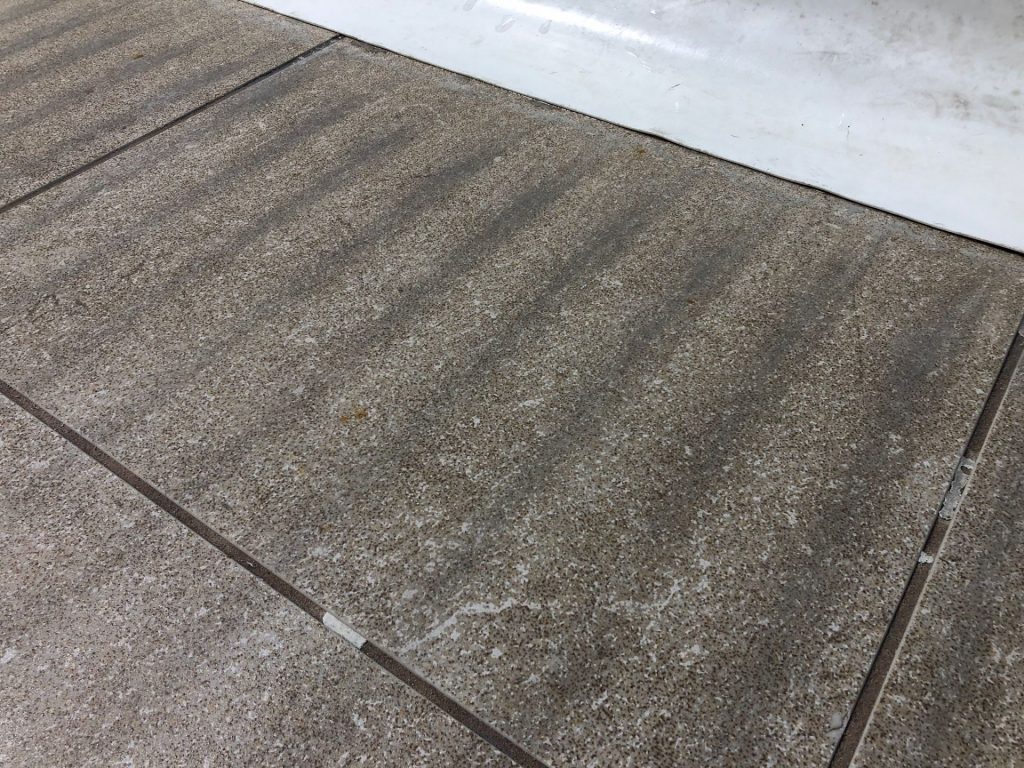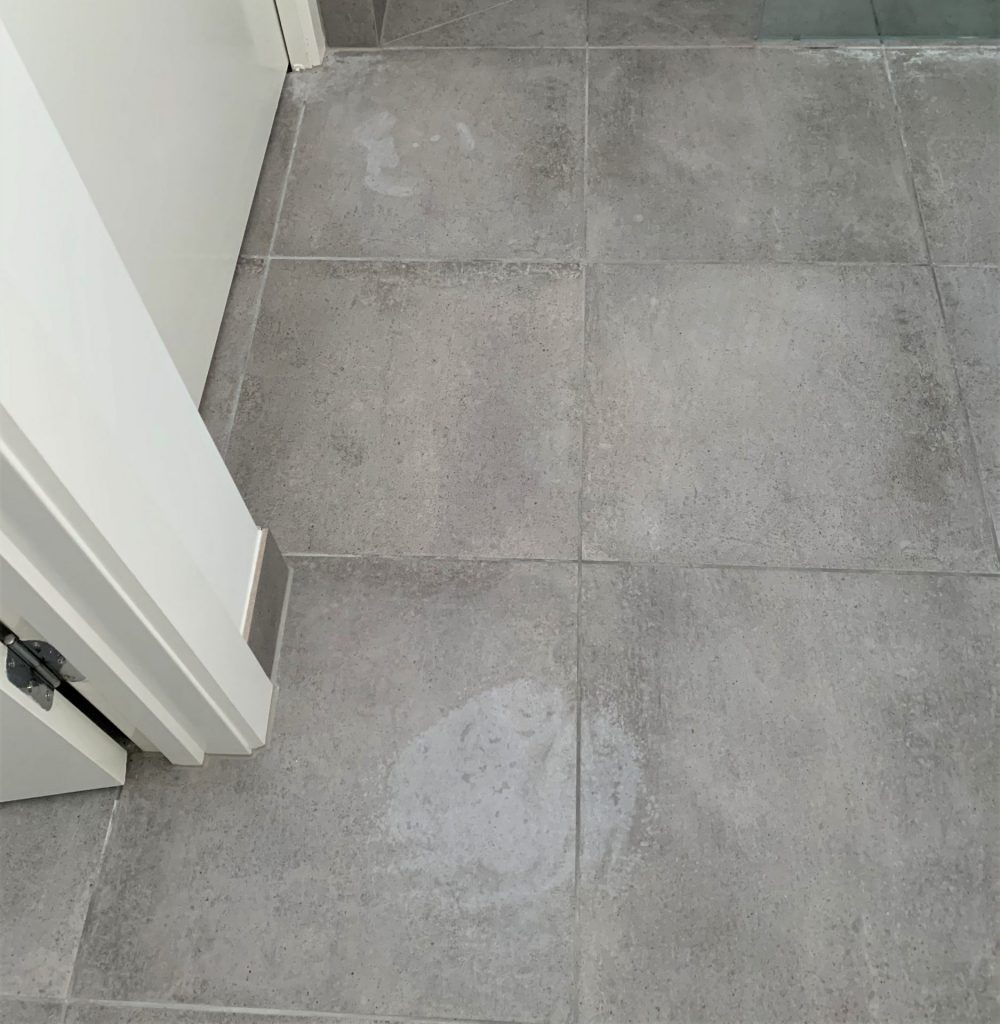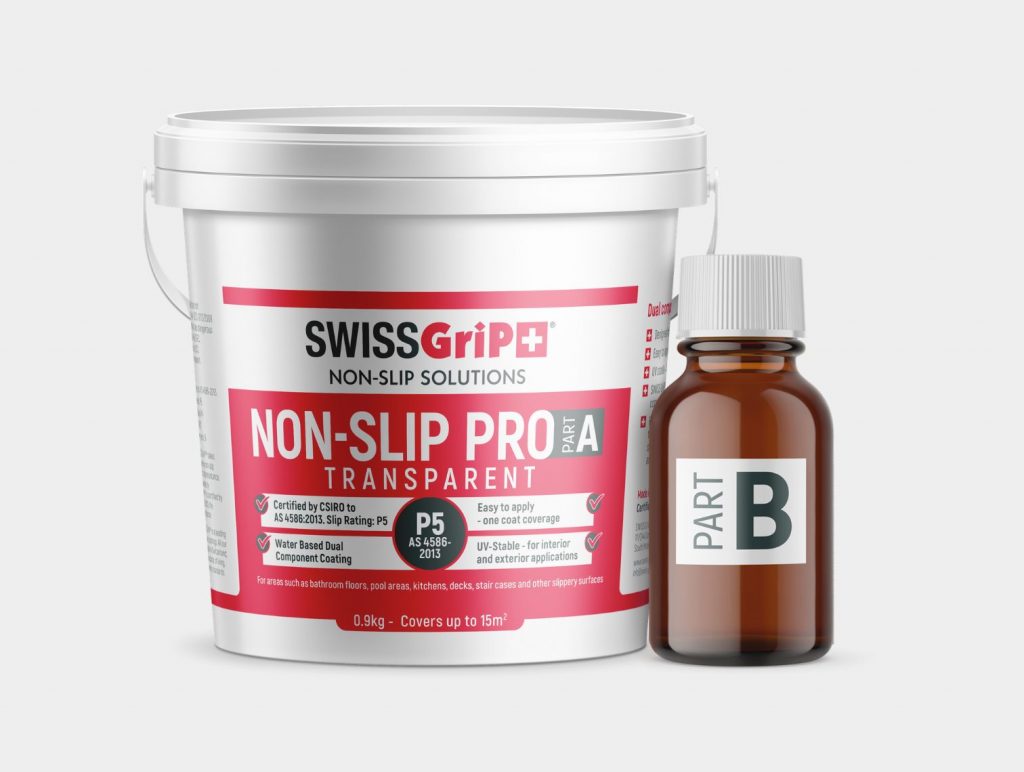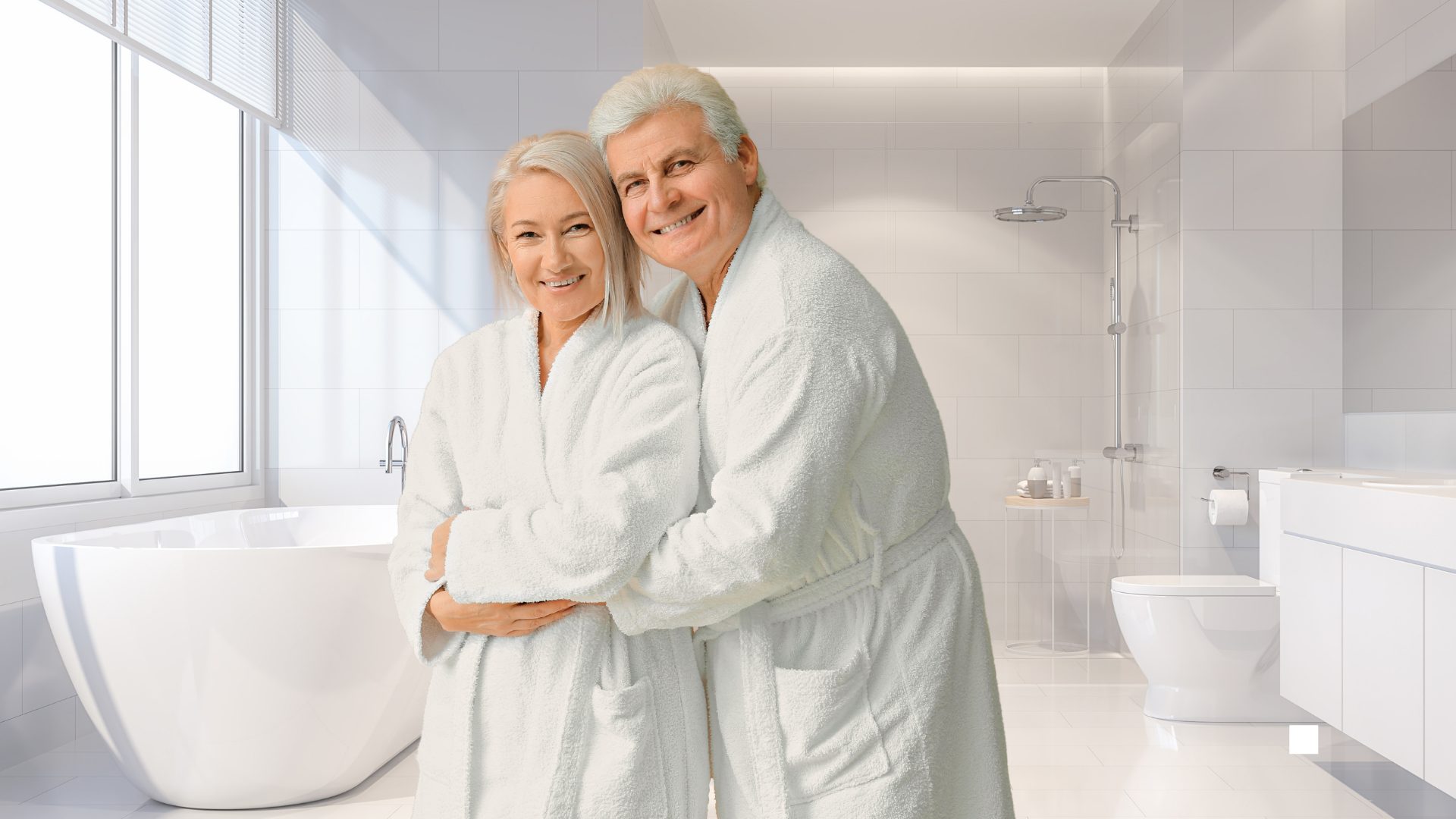To guarantee optimal safety in your bathroom, several non-slip solutions exist. However, they all differ in their effectiveness, price and aesthetics. Discover here how to make bathrooms non-slip.
Nearly 1 in 3 older Australians have experienced a fall in the past 12 months. Statistics show everyone can slip and especially children and elderly are at risk of slips and falls. Falls often cause hip fractures and head injuries that require lengthy hospitalisation and long-term effects. So you are not the only one who is looking to make your bathroom slip-free.
The below presented non-slip solutions vary in safety, hygienics, durability and aesthetics. So depending on your budget and requirements, you will be able to select the right the non-slip solution for your bathroom or shower.
Bath and shower mats
Non-slip floor mats, bath mats or shower mats are a common solution. They are very easy to install, and very cheap. The mats are available in plastic, rubber, PVC and adhere to the bottom of your bathtub or shower using suction cups.
But be careful, the effectiveness of anti-slip mats is often limited. The cups underneath the mat can come loose due to aquaplaning, and therefore the risk of slipping increases significantly. Moreover, because non-slip mats are always in contact with water, they require daily cleaning. If not maintained, the appearance of mould and bacteria is a given.
Slip Resistant Tiles
Non-slip tiles are especially aimed at new bathrooms. There are may different slip-resistant tiles such as mosaic, structured and grinded non-slip tiles. Many tiles available in showrooms claim to be slip-resistant. However, nobody will tell you that the slip-rating of the tiles are achieved in dry conditions. This is why so many bathroom floors and pool areas are slippery. However, once they are installed it is to costly to replace them.
Another issue with slip-resistant tiles is that the slip-rating wears down quickly. Many slip-resistant tiles have a thin coating which increases the coefficient of friction. In many cases, this layer wears down within six months of normal use. To assess if a tile is really slip-resistant, ask if they can provide an independent slip-test certificate. Learn more about the Australian Standards for slip-resistance here.
Non-Slip Tape

Non-slip tapes are a solution which you can stick to the surface of the shower, tub or tile. They are available in several shapes and colours. Just like anti-slip maths, they are very easy to install. However, the adhesive are not aesthetic and often have limited durability. And it might surprise that tapes are not cheap. Especially when calculated on a square metre basis, they are one of the most expensive non-slip solutions.
The main disadvantage of tape is the glue that makes the tapes stick to the surface. First of all, dirt and residue sticks on the edges of the tapes. Furthermore, the glue will leave residue marks on your tiles. It is often impossible to remove all of the glue from your tiles, even with harsh chemicals.
Anti-slip Treatment

Anti-slip treatments are a cheap and fast solution to increase the roughness of a surface. Although many suppliers will be reluctant to admit it, all anti-slip treatment are acid. As you might expect, acid is very corrosive and works by etching into the surface of the tile. Because anti-slip treatments break the seal and dissolve silica in tiles, they are known to cause staining on marble and darker surface.
Because of the hazardous nature of anti-slip treatments, they are not available for DIY, or only when strongly diluted with water which reduced the anti-slip effect. Moreover, it can be difficult to keep the surface clean after an anti-slip treatment because dirt can penetrate easily into the surface.
However, the most important aspect to consider is that anti-slip treatments are never CSIRO certified. The anti-slip effect depends greatly on the strength of the acid and the type of surface it is applied onto. And because aqua planning is still possible after an anti-slip treatment, this solution perform especially poor in wet conditions.
Swiss GriP Non-Slip: The Leading Non-Slip Solution for Bathrooms

If non of the above non-slip solutions has convinced you, and if you place your safety and aesthetics above all else, then have a look at Swiss GriP Non-Slip Bathroom. This Swiss-made solution is CSIRO-certified, completely transparent and antimicrobial.
The Swiss GriP Non-Slip solution is available in several grades and can upgrades any surface to a P3, P4 or even a P5 slip-rating. The great benefit if Swiss GriP is that the coating is certified world-wide including in the Australian Standard for Slip-Resistance. This is why Swiss GriP is the only installer of non-slip solutions to provide a No-Cure, No-Pay policy.
Besides excellent slip-resistance, Swiss GriP is antimicrobial (ISO 846-certified), UV-resistant and it does not yellow. Because the coating is water-based and environmentally friendly, it is available as DIY option or it can be installed by a professional.
Swiss GriP was developed in 1995 and has been adopted by leading European bathtub and tile manufacturers like Villeroy & Boch, Ideal Standard and Duravit. Moreover, leading care provides like McKenzie, Ramsay Health and VMCH trust Swiss GriP to protect residents from slips and falls.
Convinced? Find out more about the Swiss GriP Non-Slip Bathroom DIY Kit or get in touch if case of any questions.
Contact us for any questions or a free quote. We respond within 24 hours.

